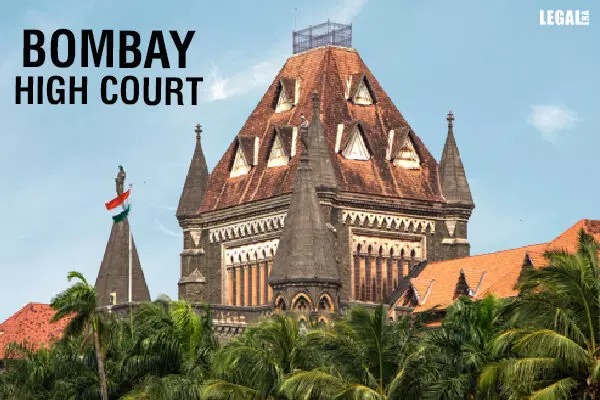- Home
- News
- Articles+
- Aerospace
- Artificial Intelligence
- Agriculture
- Alternate Dispute Resolution
- Arbitration & Mediation
- Banking and Finance
- Bankruptcy
- Book Review
- Bribery & Corruption
- Commercial Litigation
- Competition Law
- Conference Reports
- Consumer Products
- Contract
- Corporate Governance
- Corporate Law
- Covid-19
- Cryptocurrency
- Cybersecurity
- Data Protection
- Defence
- Digital Economy
- E-commerce
- Employment Law
- Energy and Natural Resources
- Entertainment and Sports Law
- Environmental Law
- Environmental, Social, and Governance
- Foreign Direct Investment
- Food and Beverage
- Gaming
- Health Care
- IBC Diaries
- In Focus
- Inclusion & Diversity
- Insurance Law
- Intellectual Property
- International Law
- IP & Tech Era
- Know the Law
- Labour Laws
- Law & Policy and Regulation
- Litigation
- Litigation Funding
- Manufacturing
- Mergers & Acquisitions
- NFTs
- Privacy
- Private Equity
- Project Finance
- Real Estate
- Risk and Compliance
- Student Corner
- Take On Board
- Tax
- Technology Media and Telecom
- Tributes
- Viewpoint
- Zoom In
- Law Firms
- In-House
- Rankings
- E-Magazine
- Legal Era TV
- Events
- Middle East
- Africa
- News
- Articles
- Aerospace
- Artificial Intelligence
- Agriculture
- Alternate Dispute Resolution
- Arbitration & Mediation
- Banking and Finance
- Bankruptcy
- Book Review
- Bribery & Corruption
- Commercial Litigation
- Competition Law
- Conference Reports
- Consumer Products
- Contract
- Corporate Governance
- Corporate Law
- Covid-19
- Cryptocurrency
- Cybersecurity
- Data Protection
- Defence
- Digital Economy
- E-commerce
- Employment Law
- Energy and Natural Resources
- Entertainment and Sports Law
- Environmental Law
- Environmental, Social, and Governance
- Foreign Direct Investment
- Food and Beverage
- Gaming
- Health Care
- IBC Diaries
- In Focus
- Inclusion & Diversity
- Insurance Law
- Intellectual Property
- International Law
- IP & Tech Era
- Know the Law
- Labour Laws
- Law & Policy and Regulation
- Litigation
- Litigation Funding
- Manufacturing
- Mergers & Acquisitions
- NFTs
- Privacy
- Private Equity
- Project Finance
- Real Estate
- Risk and Compliance
- Student Corner
- Take On Board
- Tax
- Technology Media and Telecom
- Tributes
- Viewpoint
- Zoom In
- Law Firms
- In-House
- Rankings
- E-Magazine
- Legal Era TV
- Events
- Middle East
- Africa
The Bombay High Court Sets Aside Registrar’s Refusal For Registration of & 'KHADI PRAKRITIK PAINT' Device Mark

The Bombay High Court Sets Aside Registrar’s Refusal for Registration of 'KHADI PRAKRITIK PAINT' Device Mark
The Bombay High Court recently ruled in favor of the petitioner, who challenged the refusal of registration for its device mark “KHADI PRAKRITIK PAINT” under Section 9(1)(b) of the Trade Marks Act, 1999. The petitioner had filed an application for registration of the mark in Class 2, but it was rejected by the Registrar. The Court observed that the Registrar had overlooked the previous registration granted to the petitioner for its device mark. As the mark had already been granted registration, the Court ruled that it was inappropriate for the Registrar to refuse the registration of the subject device mark.
The petitioner, a long-time user of the “KHADI” brand, had invested significantly in promoting its products. The Trade Mark Registry had declared “KHADI” as a well-known mark in 2022. In December 2020, the petitioner launched “VEDIC PAINT” and later rebranded it as “KHADI PRAKRITIK PAINT” in January 2021. The petitioner had also obtained registration for the word mark “KHADI PRAKRITIK PAINT” in Class 2 in February 2021. In March 2021, the petitioner filed an application for the registration of the device mark, which was rejected by the Registrar on two grounds: first, that it consisted of terms describing the kind and intended purpose of the goods, and second, that similar marks existed for identical goods.
The Court noted that the device mark should be assessed as a whole, and the proprietary rights conferred upon registration must cover the entire mark. The Court highlighted that the petitioner had provided sufficient evidence to demonstrate that it had been using the subject device mark in the public domain, and the Registrar had ignored this evidence. The Court also referred to previous judgments that supported the view that actual use of a mark, along with the intent to continue its use, grants the right to register the mark.
The Court found that the Registrar had failed to justify the refusal of registration based on the individual components of the mark and ignored the previously granted registration for the petitioner’s device mark “KHADI PRAKRITIK PAINT.” As a result, the Court set aside the impugned order and directed that the petitioner’s application should proceed for registration.
In conclusion, the Bombay High Court ruled that the petitioner’s device mark application should be allowed to proceed for registration, emphasizing the importance of considering the mark as a whole.



